 In piano study, very few things can be more exhausting and laborious than learning scales. Scales are probably among the least exciting elements of piano study from a traditional perspective. But this is only true if you don’t have a more creative approach to learning scales.
In piano study, very few things can be more exhausting and laborious than learning scales. Scales are probably among the least exciting elements of piano study from a traditional perspective. But this is only true if you don’t have a more creative approach to learning scales.
I want to share with you a simple but powerful method to learn 48 scales instantly. To be more specific, these consist of Major, natural minor, harmonic minor and melodic minor scales.
There are four main types of scales in contemporary music. They consist of 12 Major scales, 12 natural minor scales,12 harmonic minor scales and 12 melodic minor scales. This article is about a strategy to simplify these scales and learn them instantly.
Why 48 Scales?
Scales are the basic building blocks of chords and melodies in music. These four categories of scales (Major, minor, harmonic minor and melodic minor) are used in most contemporary music pieces. There are 12 scales in each of these categories. This article is about how to learn 48 scales instantly. You’ll be rewarded for learning them and they’re not difficult to learn with the right approach.
The 12 Major Scales
The Major scale is also known as the diatonic scale. Diatonic means in the key. The Major scale is synonymous with the Major key. This is why I often refer to the Major scale as the Major key of music.
If you can grasp the Major scale, you will literally have the key to unlock any scale. Why? Because all scales are a derivative of the Major scale. In other words, all other scales are an alteration of the Major scale. If you simply raise or lower one or more tones, you have a different scale altogether.
It’s just a matter of knowing the formula of any given scale as well as contrasting it with the Major scale.
The Major scale consists of a pattern of whole steps and half steps. A half step is the distance from one key to the very next key. A whole step is the distance from one key to the next by skipping a key.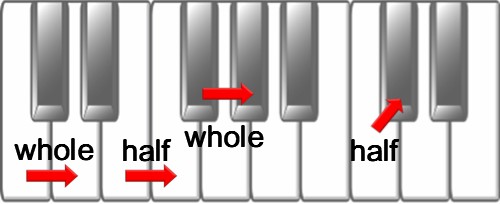 The Major scale pattern is as follows:
The Major scale pattern is as follows: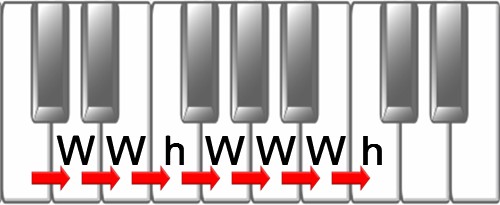 C Major Scale
C Major Scale
Db Major Scale
D Major Scale
E flat Major Scale
E Major Scale
F Major Scale
G flat Major Scale
G Major Scale
A flat Major Scale
A Major Scale
B flat Major Scale
B Major Scale
The 12 natural minor Scales
The natural minor scale is formed by taking any Major scale starting in the 6th tone. This results in a minor scale that has the same identical tones as what’s referred to as its relative minor scale.
C Major scale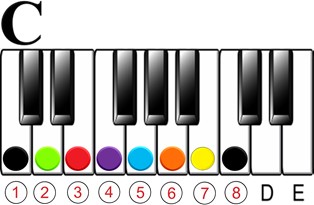 A Natural minor scale
A Natural minor scale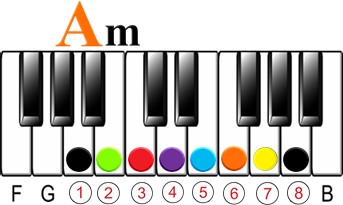
Another way to deduce the natural minor scale is to just flat the 3rd, 6th & 7th tones of any Major scale. From this perspective it’s referred to as a parallel minor scale because even though the Major and natural minor have different notes, they have the same tonic.
C Major scale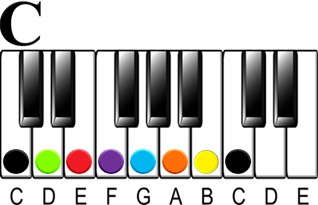
C Parallel minor scale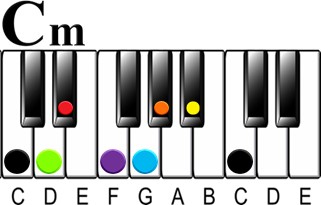
C Natural minor scale
D flat Natural minor scale
D Natural minor scale
E flat Natural minor scale
F Natural minor scale
G flat Natural minor scale
G Natural minor scale
A flat Natural minor scale
A Natural minor scale

B flat Natural minor scale
B Natural minor scale
The 12 Harmonic minor Scales
The harmonic minor scale is formed by taking the notes of the natural minor scale and raising the 7th tone up a half step. The purpose of a raised 7th tone is to create a “leading tone”. This occurs in the Major scale but not in the natural minor scale. A leading tone is a note that resolves to a note that is a half step away. Raising the 7th tone a half step creates this quality.
C natural minor scale with raised 7th
Another way to view the harmonic minor scale is to just flatten the 3rd and 6th tones of any Major scale to get its harmonic minor.
C harmonic minor
D flat harmonic minor
D harmonic minor
E flat harmonic minor
E harmonic minor
F harmonic minor
G Flat harmonic minor
G harmonic minor
A flat harmonic minor
A harmonic minor
B flat harmonic minor
B harmonic minor
The 12 Melodic minor Scales
The melodic minor scale is formed by taking the notes of the natural minor scale and raising the 6th and 7th tones a half step. The purpose of the raised 6th and 7th tones results from the creation of the harmonic minor scale.
In the harmonic minor scale, the 7th was raised a half step to create a leading tone. Even though this solved the challenge of a natural minor scale of not having one, it created a large gap in the scale. It caused the 6th and 7th tones to be one and half steps apart. Raising the 6th tone resolves the gap down to a whole step between the 6th and 7th tones.
Another way to view the melodic minor scale is to just flatten the 3rd tone of any Major scale to get its melodic minor.
C melodic minor
D flat melodic minor
D minor
E flat melodic minor
E minor
F minor
G flat minor
G minor
A flat minor
A minor
B flat minor
B minor
Greg Lee
Latest posts by Greg Lee (see all)
- What is a minor/Major 7 Chord? - October 26, 2023
- 7 Chord Substitutions that Professionals Use - October 19, 2023
- 5 Simple Chord Tricks to Sound Amazing - October 5, 2023



